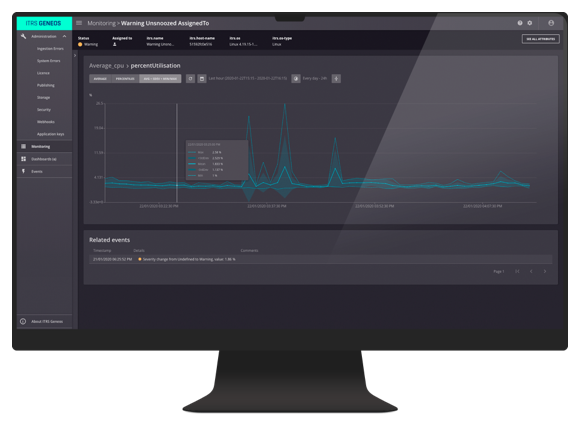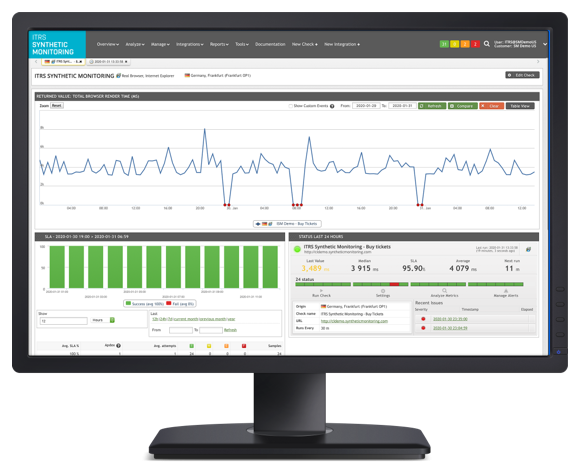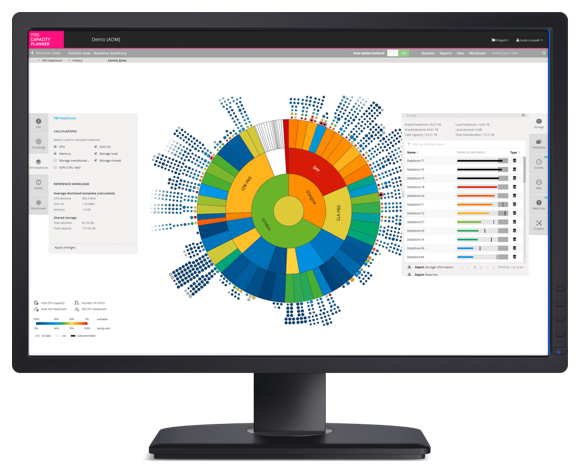Telecommunications
When the world depends on your networks and customers demand 24/7 service, downtime is unthinkable – especially when you’re running large, complex infrastructure.
ITRS to acquire IP-Label. Read the press release.
When the world depends on your networks and customers demand 24/7 service, downtime is unthinkable – especially when you’re running large, complex infrastructure.
Operating the backbone of global communications and digital infrastructure comes with unique challenges.
The infrastructure is exceptionally complex and often inflexible. Once pioneering technologies are now legacy systems – and in the race for digital transformation they are smashing up against newer solutions. Consumers are changing their consumption patterns faster than the network can respond, and rebuilding old systems for new dynamic environments can’t always be done.
Although there is no quick fix it is possible to regain control of your infrastructure, and with it reduce outages, boost customer satisfaction, and minimise financial loss.
Customer loyalty is hard to win and easy to lose. Consumer needs have changed dramatically and demands on services have increased. Customer retention is now reliant on a 24/7 service – and data-led insights into their utilisation habits are needed to optimise the customer experience.
Consumption patterns are less predictable than ever and accurate planning for peak times almost impossible. 2020 amplified pre-existing problems, with greater volumes and a distributed workforce placing huge pressure on existing infrastructure.
Telecom networks are particularly vulnerable to outages, especially when supporting decades-old systems. Millions of transactions per millisecond, increasingly dynamic environments and more distributed workspaces all make infrastructure issues hard to spot – and just one system change can set off new problems like a domino.

As the enterprise moves to a more dynamic IT environment, it adds complexity to an already complex infrastructure. End-to-end visibility of the entire IT estate to identify performance issues is essential if businesses are to avoid outages or damaging down-time. But while scalability becomes easier, maintaining complete system oversight gets much more difficult.
ITRS Opsview and Geneos are scalable solutions that deliver 24/7 real-time performance monitoring to enterprises worldwide. They provide precise insight into the status of the IT estate at a single point in time, so you can accurately anticipate issues and resolve them quickly. That improves the customer experience and enables your employees to focus on business growth with total peace of mind.

Customer experience is key. To improve it and maintain it, you need to put yourself in the shoes of your end users. You need direct insight into the performance and availability of your networks’ most critical systems, including websites, applications and APIs and how well they are delivering for your customers.
This is what ITRS Synthetic Monitoring does. It shows you whether a customer can gain access to the services they want. It highlights where things are running too slow or when they are simply unavailable. It simulates a realistic user experience across all services, from 180+ locations across 60+ countries, to ensure optimal user experience 24/7. It is the most fundamental test of IT availability there is.

Your network, like all networks, has a traffic limit. Knowing what that limit is and how to address potential points of failure is critical. When there are sudden shifts in peak demand, such as those caused by Covid-19, you need to know you have the capacity to handle the changes.
ITRS Capacity Planner uses data collected from ITRS Synthetic Monitoring, ITRS Opsview and Geneos to model capacity, plan, test and stress-test the entire production estate. It helps you to better understand where and when a failure may occur and to establish the right solutions and protocols to avoid disruption down the line.